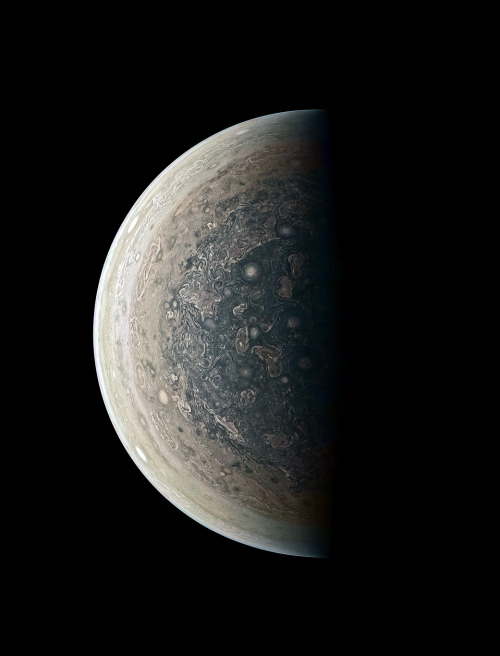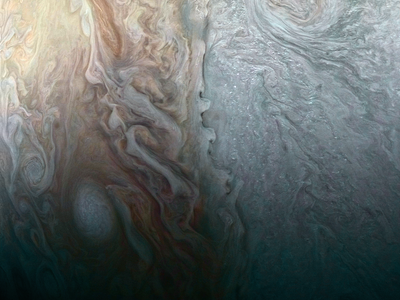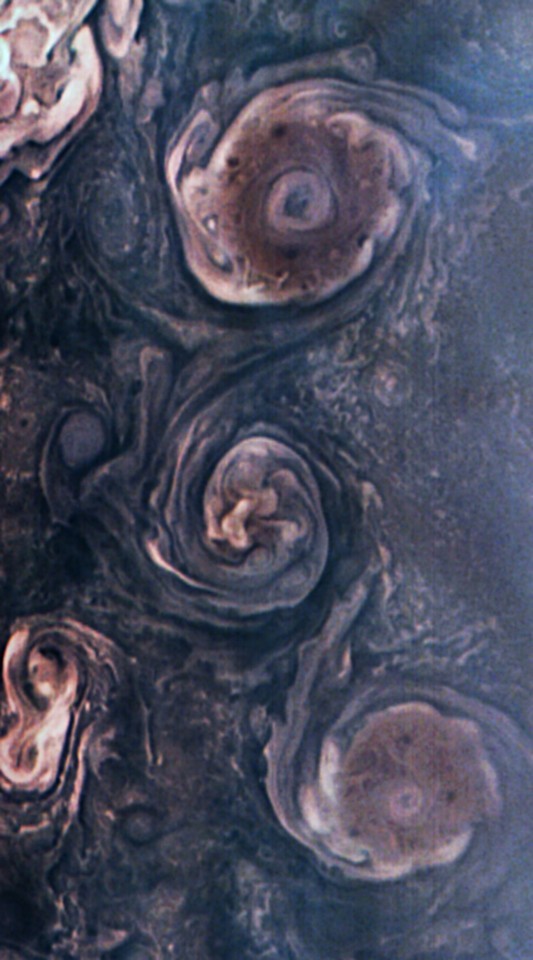Fantastic Success Story For The Astronomy Community Of China, Congratulations!

Fantastic success story for the astronomy community of China, congratulations!
More Posts from Maevetheeuropan and Others

The Exoplanetary Menagerie
Today a massive discovery was announced: 39 light years away in the TRAPPIST-1 star system seven terrestrial planets all orbit extremely close to each other.
…and three are well within their star’s “habitable zone”.
TRAPPIST-1 is an ultra-cool dwarf star. Because its temperature is so much lower than a typical star like the sun (it’s roughly 2550 K while the sun’s 5772 K) planets are able to orbit much closer than they could in our Solar System and sustain habitable conditions. All seven of the discovered exoplanets orbit closer to TRAPPIST-1 than Mercury does to the sun.
Of the different planets discovered, one is immensely Earthlike, having a similar size and receiving roughly the same amount of light as Earth. This place could be a whole lot more like home than anything we’ve found yet. Another planet is a potential water-world, getting about as much light as does Mars (with an atmosphere, yes, it could be a liquid water world).
So close do these planets all orbit near to each other that if you were to go to one and look up, you could see the other planets in the sky above you… and they’d be as big as *or larger than the Moon is in our sky*. It must be one of the most beautiful sights.
So what’s the big deal right? NASA’s already found over 3000 exoplanets - what makes these ones special?
A few remarkable things:
One, TRAPPIST-1 is a member of the M-class stars - stars which make up 70% or so of all the stars out in the Milky Way. Knowing that such stars can host magnificent habitable planetary systems means the search for life just got blown wide open to 70% of the stars in our galaxy.
Two, though 39 light years seems far, this is actually unimaginably close. We’re basically neighbors. The fact that TRAPPIST-1 is so close means that astronomers will be able to subject this place to decades of intense research.
As NASA begins to turn space telescopes such as Hubble, Kepler and Spitzer on TRAPPIST-1, I think we’ll be hearing a lot more from it soon.
Before you go, please consider joining the Planetary Society. If TRAPPIST-1 intrigues you, just wait until you see what else we have happening.
At the Planetary Society we have a radio show with some of the most groundbreaking material to include exoplanet hunters, engineers designing interstellar missions and interviews with astronauts. Most important though, we go to D.C. and make sure the politicians continue funding NASA and space science, and we reach out to people and try to show them what could be.
On that note, here are some artist conceptions of the TRAPPIST-1 star system and what could be:





So good job to the team that made this discovery (especially lead author Michaël Gillon) and I can’t wait to learn more about this place soon.
(Image credit: NASA-JPL/Caltech, NASA/JPL-Caltech/R. Hurt (IPAC), NASA/JPL-Caltech/T. Pyle (IPAC), NASA/JPL-Caltech/R. Hurt (IPAC), ESO/M. Kornmesser and NASA-JPL/Caltech respectively)

@little-laced Here are some test shots I took of the moon. It’s hard to tell because I had to reduce the image size drastically but the telescope was extremely difficult to keep focused. The image quality loss I incurred uploading this only adds to the ‘out-of-focus’ness
Also shout out to the Sea of Crises visible as the circular, dark-gray splotch on the right

New Hubble Portrait of Mars (which will be at its closest to us on 30 May)
On May 12, 2016, the Hubble Space Telescope captured this vivid photo of Mars, when the planet was closer to Earth than usual and approaching the opposition (when the sun and Mars will be on exact opposite sides of Earth). Mars is especially photogenic during opposition because it can be seen fully illuminated by the sun as viewed from Earth. Mars will reach opposition on May 22.
Furthermore, the closest approach to Earth for the year will occur on 30 May, when Mars will be at a distance of 75.28 million km (46.78 million miles) from us. For comparison, the average distance between the two is 225 million km. These two events so close together make the coming week(s) the best time to observe the red planet with a telescope. You can already notice it in the night sky (check for your location) as one of the brightest dots with a red-orange glow near the Moon.
Read about the Hubble’s image here.
Image credits: NASA, ESA, the Hubble Heritage Team (STScI/AURA), J. Bell (ASU), and M. Wolff (Space Science Institute)
Okay now that I’m starting to get my ass in gear for astrophotography, I’d love it if some of y’all sated my need for attention and followed my instagram! I will return the favor of course
It’s mostly just space pictures, dogs, me, hiking stuff and lab stuff

Yeeeeeeeeees!
I am filled with such excitement!


Scientists find another sign suggesting life existed on Mars
According to new research published in the Journal of Geophysical Research, scientists are getting even more indicators that life once existed on Mars. The latest proof? Carbonates found in 3.8 billion-year-old rock in the Huygens basin.
Follow @the-future-now









Images of Jupiter taken by JunoCam on NASA’s Juno spacecraft.

Mission Juno
Juno is a NASA spacecraft. It is exploring the planet Jupiter. Juno launched from Earth in 2011. It reached Jupiter in 2016. That was a five-year trip!
The name “Juno” comes from stories told by the Romans long ago. In the stories, Juno was the wife of Jupiter. Jupiter hid behind clouds so no one could see him causing trouble. But Juno could see through the clouds.
Juno has science tools to study Jupiter’s atmosphere. (The atmosphere is the layer of gases around a planet.) Juno will take the first pictures of Jupiter’s poles. The spacecraft will study the lights around Jupiter’s north and south poles, too.
Juno will help scientists understand how Jupiter was made. The spacecraft will help them learn how Jupiter has changed, too. The new discoveries can help us understand more about our solar system.
Sound of Jupiter’s Magnetosphere: Click here
Credit: NASA / JPL-Caltech / Mission Juno / Jason Major / Luca Fornaciari / Gerald Eichstädt
When Dead Stars Collide!
Gravity has been making waves - literally. Earlier this month, the Nobel Prize in Physics was awarded for the first direct detection of gravitational waves two years ago. But astronomers just announced another huge advance in the field of gravitational waves - for the first time, we’ve observed light and gravitational waves from the same source.

There was a pair of orbiting neutron stars in a galaxy (called NGC 4993). Neutron stars are the crushed leftover cores of massive stars (stars more than 8 times the mass of our sun) that long ago exploded as supernovas. There are many such pairs of binaries in this galaxy, and in all the galaxies we can see, but something special was about to happen to this particular pair.

Each time these neutron stars orbited, they would lose a teeny bit of gravitational energy to gravitational waves. Gravitational waves are disturbances in space-time - the very fabric of the universe - that travel at the speed of light. The waves are emitted by any mass that is changing speed or direction, like this pair of orbiting neutron stars. However, the gravitational waves are very faint unless the neutron stars are very close and orbiting around each other very fast.

As luck would have it, the teeny energy loss caused the two neutron stars to get a teeny bit closer to each other and orbit a teeny bit faster. After hundreds of millions of years, all those teeny bits added up, and the neutron stars were *very* close. So close that … BOOM! … they collided. And we witnessed it on Earth on August 17, 2017.

Credit: National Science Foundation/LIGO/Sonoma State University/A. Simonnet
A couple of very cool things happened in that collision - and we expect they happen in all such neutron star collisions. Just before the neutron stars collided, the gravitational waves were strong enough and at just the right frequency that the National Science Foundation (NSF)’s Laser Interferometer Gravitational-Wave Observatory (LIGO) and European Gravitational Observatory’s Virgo could detect them. Just after the collision, those waves quickly faded out because there are no longer two things orbiting around each other!
LIGO is a ground-based detector waiting for gravitational waves to pass through its facilities on Earth. When it is active, it can detect them from almost anywhere in space.

The other thing that happened was what we call a gamma-ray burst. When they get very close, the neutron stars break apart and create a spectacular, but short, explosion. For a couple of seconds, our Fermi Gamma-ray Telescope saw gamma-rays from that explosion. Fermi’s Gamma-ray Burst Monitor is one of our eyes on the sky, looking out for such bursts of gamma-rays that scientists want to catch as soon as they’re happening.
And those gamma-rays came just 1.7 seconds after the gravitational wave signal. The galaxy this occurred in is 130 million light-years away, so the light and gravitational waves were traveling for 130 million years before we detected them.

After that initial burst of gamma-rays, the debris from the explosion continued to glow, fading as it expanded outward. Our Swift, Hubble, Chandra and Spitzer telescopes, along with a number of ground-based observers, were poised to look at this afterglow from the explosion in ultraviolet, optical, X-ray and infrared light. Such coordination between satellites is something that we’ve been doing with our international partners for decades, so we catch events like this one as quickly as possible and in as many wavelengths as possible.

Astronomers have thought that neutron star mergers were the cause of one type of gamma-ray burst - a short gamma-ray burst, like the one they observed on August 17. It wasn’t until we could combine the data from our satellites with the information from LIGO/Virgo that we could confirm this directly.

This event begins a new chapter in astronomy. For centuries, light was the only way we could learn about our universe. Now, we’ve opened up a whole new window into the study of neutron stars and black holes. This means we can see things we could not detect before.

The first LIGO detection was of a pair of merging black holes. Mergers like that may be happening as often as once a month across the universe, but they do not produce much light because there’s little to nothing left around the black hole to emit light. In that case, gravitational waves were the only way to detect the merger.

Image Credit: LIGO/Caltech/MIT/Sonoma State (Aurore Simonnet)
The neutron star merger, though, has plenty of material to emit light. By combining different kinds of light with gravitational waves, we are learning how matter behaves in the most extreme environments. We are learning more about how the gravitational wave information fits with what we already know from light - and in the process we’re solving some long-standing mysteries!
Want to know more? Get more information HERE.
Make sure to follow us on Tumblr for your regular dose of space: http://nasa.tumblr.com
-
 mbvsfo liked this · 5 years ago
mbvsfo liked this · 5 years ago -
 shadow-boi-27 liked this · 6 years ago
shadow-boi-27 liked this · 6 years ago -
 detective4blog liked this · 6 years ago
detective4blog liked this · 6 years ago -
 ghost-likefaun liked this · 6 years ago
ghost-likefaun liked this · 6 years ago -
 theoreticalheroine liked this · 7 years ago
theoreticalheroine liked this · 7 years ago -
 elizabee23 liked this · 8 years ago
elizabee23 liked this · 8 years ago -
 eelfleece liked this · 8 years ago
eelfleece liked this · 8 years ago -
 kulekrizpy liked this · 8 years ago
kulekrizpy liked this · 8 years ago -
 sonar-taxlaw reblogged this · 8 years ago
sonar-taxlaw reblogged this · 8 years ago -
 kristybluebird liked this · 8 years ago
kristybluebird liked this · 8 years ago -
 galaxmousey-spam liked this · 8 years ago
galaxmousey-spam liked this · 8 years ago -
 avani2014 reblogged this · 8 years ago
avani2014 reblogged this · 8 years ago -
 kindaquixotic liked this · 8 years ago
kindaquixotic liked this · 8 years ago -
 goddess-of-the-galaxy liked this · 8 years ago
goddess-of-the-galaxy liked this · 8 years ago -
 littleplasticspaceship reblogged this · 8 years ago
littleplasticspaceship reblogged this · 8 years ago -
 thefingerpaintingutahraptor liked this · 8 years ago
thefingerpaintingutahraptor liked this · 8 years ago -
 alibrariangoestoikea reblogged this · 8 years ago
alibrariangoestoikea reblogged this · 8 years ago -
 aboynameddisaster liked this · 8 years ago
aboynameddisaster liked this · 8 years ago -
 hermeasy liked this · 8 years ago
hermeasy liked this · 8 years ago -
 p1x3lruckus liked this · 8 years ago
p1x3lruckus liked this · 8 years ago -
 astergenius liked this · 8 years ago
astergenius liked this · 8 years ago -
 inactiveaccount123456 liked this · 8 years ago
inactiveaccount123456 liked this · 8 years ago -
 fathersith liked this · 8 years ago
fathersith liked this · 8 years ago -
 ffff1gp liked this · 8 years ago
ffff1gp liked this · 8 years ago -
 fallsandflames liked this · 8 years ago
fallsandflames liked this · 8 years ago -
 an-abundance-of-names liked this · 8 years ago
an-abundance-of-names liked this · 8 years ago -
 werewolfest reblogged this · 8 years ago
werewolfest reblogged this · 8 years ago -
 werewolfest liked this · 8 years ago
werewolfest liked this · 8 years ago -
 startography liked this · 8 years ago
startography liked this · 8 years ago -
 ayghe reblogged this · 8 years ago
ayghe reblogged this · 8 years ago -
 ayghe liked this · 8 years ago
ayghe liked this · 8 years ago -
 kungpowpipis reblogged this · 8 years ago
kungpowpipis reblogged this · 8 years ago -
 kungpowpipis liked this · 8 years ago
kungpowpipis liked this · 8 years ago -
 overthinkingfeathers liked this · 8 years ago
overthinkingfeathers liked this · 8 years ago -
 carabas reblogged this · 8 years ago
carabas reblogged this · 8 years ago -
 giantmechanicalants liked this · 8 years ago
giantmechanicalants liked this · 8 years ago -
 starcxrpse reblogged this · 8 years ago
starcxrpse reblogged this · 8 years ago -
 jessthenot-so-hotmess liked this · 8 years ago
jessthenot-so-hotmess liked this · 8 years ago -
 wowkalak liked this · 8 years ago
wowkalak liked this · 8 years ago -
 xandaren reblogged this · 8 years ago
xandaren reblogged this · 8 years ago








